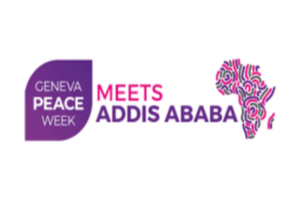Ethiopia stands as a beacon of humanitarianism on the African continent, a fact widely acknowledged though often unspoken. The nation generously hosts over a million refugees, providing essential services and even adapting its legal frameworks to better accommodate those seeking asylum within its borders. This commitment to safeguarding the vulnerable, however, stands in stark contrast to a deeply troubling internal reality: a significant portion of its own youth population is embarking on unsafe journeys abroad through irregular means, often falling prey to ruthless human traffickers.
The allure of a better life, fueled by desperation and sometimes misinformation, drives many young Ethiopians to undertake these dangerous voyages, putting their lives at grave risk. Stories abound of individuals being deceived by traffickers, leading them down treacherous paths that often end in tragedy, exploitation, or destitution.
In response to this alarming trend, the Ethiopian government, in collaboration with its partners, is working tirelessly to ensure the safety and return of its citizens who have traveled irregularly. These efforts have yielded significant results, with many Ethiopians successfully repatriated. However, the fight against human trafficking remains an uphill battle, a grave concern that continues to impact countless lives and poses a significant challenge to the nation’s development and security.
According to a late response from the International Organization for Migration (IOM) Ethiopia to emailed questions from The Ethiopian Herald, certain regions bear a disproportionate burden of this illicit trade. Addis Ababa, Amhara, Central Ethiopia, Oromia, and Tigray report the highest numbers of trafficking victims. This geographical concentration highlights areas where recruitment and transit networks may be particularly entrenched.
However, IOM’s insights also underscore a critical point: human trafficking is not confined to these five regions. It is a pervasive nationwide scourge, its tendrils reaching into every corner of Ethiopia. Disturbingly, even internally displaced persons (IDP) sites and refugee camps, meant to be sanctuaries for those fleeing conflict and persecution, have become fertile grounds for traffickers. The inherent vulnerability of populations within these sites makes them particularly susceptible to exploitation, highlighting an urgent need for enhanced protective measures.
Despite Ethiopia’s admirable commitment to humanitarian principles, the ongoing problem of human trafficking highlights the complex socio-economic pressures at play. To fully reconcile its role as a haven for others with the imperative to protect its own, IOM Ethiopia stated that addressing this complex issue requires not only strong law enforcement and repatriation efforts but also comprehensive strategies that address the root causes of irregular migration, foster economic opportunities, and provide genuine alternatives for young Ethiopians yearning for a more secure future.
According to IOM Ethiopia, the country’s geographical position places it at a critical juncture, serving as a source, transit, and, to a lesser extent, destination country for migrants within Africa, as well as to the Middle East and Europe. This complex migratory landscape is often exploited by sophisticated migrant smuggling networks that facilitate irregular movements into, through, and out of the country.
Disturbingly, human trafficking in Ethiopia frequently occurs within the context of these smuggling activities, though it also operates independently. The U.S. State Department’s Trafficking in Persons Report underscores the widespread nature of internal trafficking, where many Ethiopians from rural areas, facing limited economic opportunities, are exploited in urban centers for domestic servitude, forced labor, and prostitution.
In a commendable effort to combat this insidious crime, IOM Ethiopia is actively collaborating with the government of Ethiopia to conduct further research on the prevalence of internal trafficking, a vital step towards developing targeted and effective interventions.
The perpetrators of these heinous acts, as identified by IOM Ethiopia, are individuals or groups who ruthlessly exploit migrants. These traffickers often operate under the false pretense of providing smuggling services or legitimate employment, luring unsuspecting individuals into a snare of exploitation.
The majority of cases involving Ethiopians being trafficked within the context of irregular migration occur in transit and destination countries, including Sudan, Libya, Egypt, Djibouti, Somalia, Yemen, and various Gulf countries. In these desperate circumstances, migrants are subjected to horrific abuses, including extortion, kidnapping for ransom, indefinite detention, debt bondage, and unpaid labor, all under the guise of facilitating their journeys. The deceitful promise of smuggling services or employment is a common tactic employed by traffickers to ensnare their victims.
According to IOM Ethiopia, there are three primary routes that are utilized for smuggling migrants out of Ethiopia, each fraught with peril. The first one is the eastern route, which sees Ethiopians traveling via Djibouti or Somalia (particularly Somaliland and Puntland) to reach Yemen. From Yemen, the vast majority continue onward to Saudi Arabia and other Gulf states, driven by the pursuit of employment opportunities.
Secondly, the southern route that predominantly used by Ethiopians and Somalis, this route leads into Kenya and then continues onward to countries in southern Africa, with South Africa being the primary destination.
And the northern route that connects Ethiopia to neighboring Sudan serves as a crucial transit country for those seeking passage to Libya and Egypt. From there, many embark on treacherous maritime journeys to Europe, with Italy being a primary destination.
However, according to an IOM report, “A Region on the Move 2021: East and Horn of Africa,” only a minority of Ethiopian migrants utilize this route, as the Northern Route towards North Africa and Europe tends to be less traveled by migrants from the East and Horn of Africa region.
The decision to undertake these perilous journeys are often driven by a confluence of factors, including conflicts, climate change, and socioeconomic challenges. Climate shocks, in particular, exacerbate poverty and undermine livelihood opportunities, intensifying existing social and economic vulnerabilities and eroding the resilience of impacted communities.
In regions with strong traditions of mobility, migration can become a coping mechanism. This can tragically lead affected populations to perceive irregular migration as a viable and even necessary option for better opportunities, pushing them into the clutches of smugglers and traffickers.
The government of Ethiopia, in collaboration with partners like IOM, continues to address the root causes of irregular migration and human trafficking, striving to protect its citizens from exploitation and ensure their safety and well-being.
Addressing this multifaceted problem requires not only robust law enforcement and repatriation efforts but also comprehensive strategies that tackle the root causes of irregular migration, foster economic opportunities, and provide genuine alternatives for young Ethiopians yearning for a more secure future. Only then can Ethiopia fully reconcile its role as a haven for others with the imperative to protect its own.
BY EYUEL KIFLU
THE ETHIOPIAN HERALD SUNDAY EDITION 15 JUNE 2025



